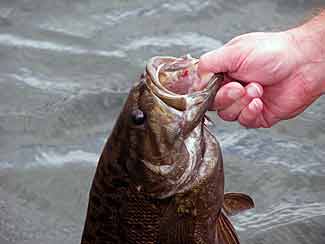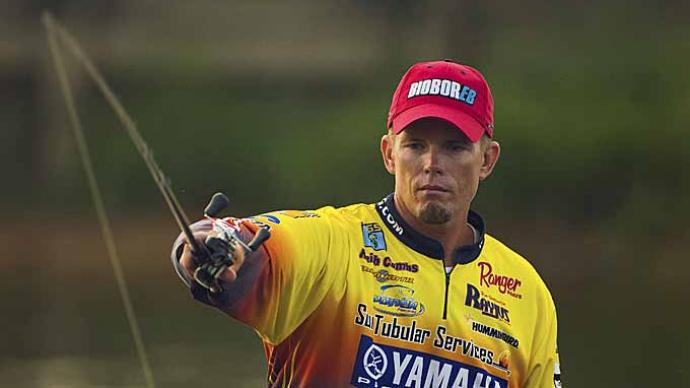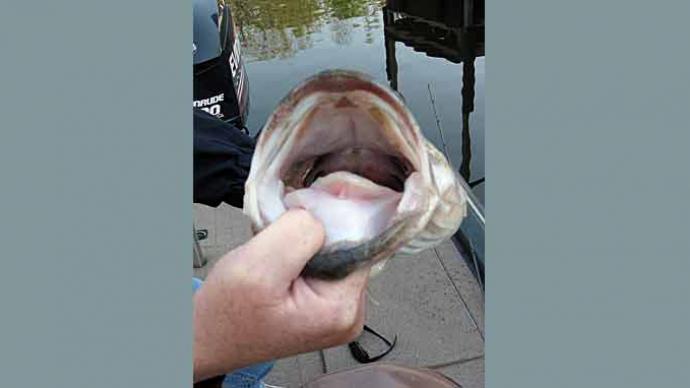
We all know that determining fish location is critical to becoming a successful angler, and some fundamental factors influence fish location. However, it should be noted that some not-so-basic factors sometimes significantly influence positioning fish more than the basics.
In general, the activity level of fish is likely the most essential piece of the puzzle for catching them. In the search for active fish, many factors can influence their location. In a previous article about the importance of depth in determining the fish location and in doing so, I also mentioned that there are other factors, and wind or current is one of them.
Years ago, I went fishing with a good friend on his favorite lake. This body of water was relatively small and extremely clear, but he occasionally caught a number of good-sized bass at this particular lake. He is a live bait angler, and we sat in 90-degree heat, with a stiff breeze in our faces, at his favorite spot for almost four hours. When he apologized for not producing that spot, I told him that the breeze was blowing into the opposite shore and that we'd likely fare better there. We picked up stakes and almost immediately were into some nice fish. Our "good luck" continued throughout the rest of the outing.
Wind creates surface currents, sometimes subtle and sometimes obvious, but that current is often the most vital factor in determining where active fish will be located. That fact should always be considered in featureless bodies such as the lake I mentioned or a retention pond. Not that it doesn't have a lot of influence on larger bodies of water, it does, but that effect is diminished when different forms of structure and cover come into play.
To understand why wind and current are such important factors, you need to understand another of the basics in locating active fish – forage. Whether active or inactive, adult fish will position themselves near a food source or where the food source will pass. Wind and current will stack the 'food' that many types of their forage feed upon in areas it flows into and out of. I'll get into that shortly. So those are the areas our target fish will position themselves on or near when wind/current is present.
This doesn't mean that you should immediately head to a windblown area when the wind kicks up. It takes time for that cycle to present itself, but if the wind has been blowing out of the south or west consistently, its effect on fish location becomes a significant factor. Again, depending on the average wind speed and the size of the lake you're targeting, it could take a day or two to become a significant influence.
What about the current flowing out of a windblown area? The volume of water that flows into an area, at some point or other, needs to flow back out. You don't need to study fluid dynamics to come to this conclusion. You only need to know that it's a fact. When and where that flow of water or back current occurs can sometimes put you on the fish others overlook. On pressured waters, this can make a difference. Under moderate wind that sustains for a day or so on a large body of water, a large volume of water will build up on the windblown shore. When that volume becomes too great, the excess water will seek out its low point, and the flow will be the opposite of the wind direction for all but the surface layer of water.
If we apply other factors to our search, we've narrowed it down considerably. Take the depth factor. If you've determined the depth level the fish are using, say 15 feet, adding the wind/current factor will eliminate several potential locations and steer you to more probable locations.
Any discussion of wind has to include a comment or two about how it influences fish activity levels. Wind disturbs the water's surface and, in doing so, cuts down on light penetration. Most anglers know that prime periods of activity are under low light conditions like dawn or dusk, and wave action has a very similar effect below the surface. We already touched on the importance of the activity level, and the presence of wind also helps determine it.
Next time out, consider the wind when evaluating the fish's location. The wind is your friend, and I don't mean because it's easier to cast with it at your back.
About the author
Joe Cortesi is passionate about fishing and has been targeting bass for over 40 years. As a teacher, he has introduced toddlers to seniors to this great sport, and nothing gives him greater pleasure than sharing the experience of a student's first catch.




